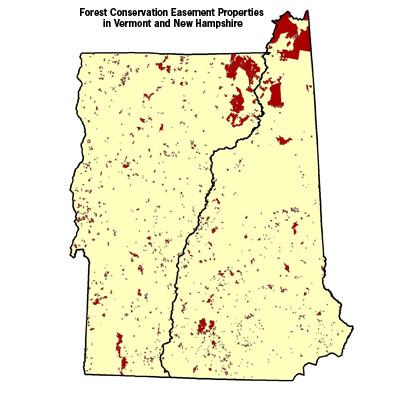Do Conservation Easements Promote Sustainable Management of the Northern Forest?

Since the 1980s, some 2,000 properties covering over two million acres of forest are now under conservation easements in Maine, New Hampshire, Vermont, and northern New York. A conservation easement, or legal agreement between a landowner and a land trust or government office, permanently restricts uses of a property to protect specified conservation values. Forest stakeholders, including timber companies, land trusts, and state agencies seek a better understanding of how easements affect the sustainability of forests.
To examine the effects of conservation easements on forest management in the Northern Forest, NSRC researchers surveyed 136 easement landowners in the four states, visited properties, and interviewed foresters managing the lands. Nearly 75% of survey respondents use written forest management plans. Forest health, wildlife, and wood products are the top priorities. Commercial harvesting, which occurred on 54% of properties since an easement was enacted, was done carefully, using best management practices for stand improvements, wildlife considerations, and protection of water and soil. Findings show that conservation easements are being used effectively to encourage sustainable management of forest resources.
To assess the influence of easements on local communities, researchers interviewed 48 residents of Island Pond, Vermont; Pittsburg, New Hampshire; and Rangeley, Maine, each near a conservation easement project in excess of 100,000 acres. Projects using public funds or resulting in public land ownership provided opportunities for public involvement, while private deals had limited public participation. Involving the public early provided opportunities to balance competing demands of community interest groups.
Download printable version [PDF]
Download full final report [PDF]
